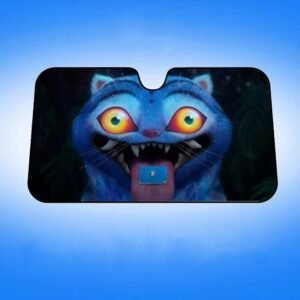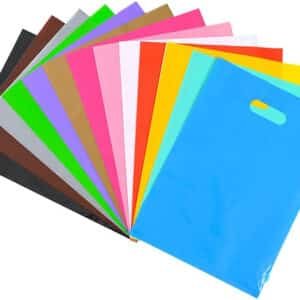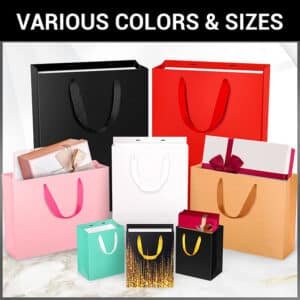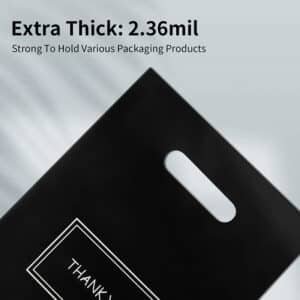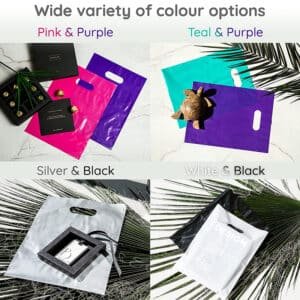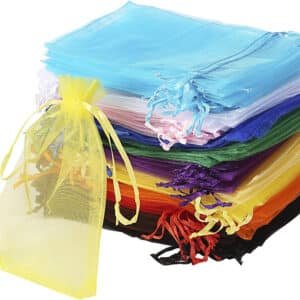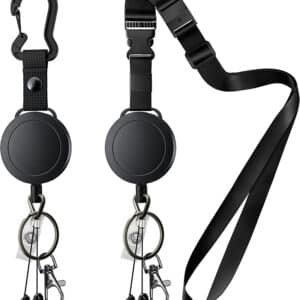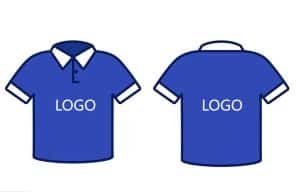Top Promotional Products to Watch in 2025!
I. Introduction
A. Importance of promotional products in marketing
Promotional products play a crucial role in marketing for several reasons:
- Brand Awareness: Promotional products increase visibility by keeping your brand in front of consumers. When recipients use or display these items, it generates awareness and helps reinforce brand recognition over time.
- Tangible Connection: Unlike digital ads, promotional products create a physical connection with the brand. They serve as reminders of your company and can evoke positive feelings when consumers interact with them.
- Cost-Effective Advertising: Promotional products often provide a high return on investment compared to other marketing methods. They can reach a broad audience at a relatively low cost, making them an efficient way to promote your brand.
- Customer Loyalty: Giving away useful and high-quality items can enhance customer loyalty. When consumers feel appreciated, they are more likely to engage with the brand and make repeat purchases.
- Word-of-Mouth Marketing: Unique and appealing promotional products can encourage word-of-mouth referrals. When recipients share or talk about the items, it generates organic buzz and expands your brand’s reach.
- Increased Engagement: Promotional products can spark interest and interaction, especially when tied to campaigns, events, or contests. This engagement helps build relationships with potential customers.
- Versatility: Promotional products can be tailored to suit various marketing goals, whether it’s launching a new product, enhancing brand visibility, or supporting a specific event. They can be customized to fit the target audience and occasion.
- Positive Brand Association: When consumers receive practical and high-quality items, they associate those positive experiences with your brand. This can enhance their perception and encourage loyalty.
- Measurable Impact: Many promotional product campaigns can be tracked and measured for effectiveness, allowing brands to analyze their impact and refine strategies for future initiatives.
In summary, promotional products are a valuable marketing tool that can enhance brand visibility, foster customer loyalty, and drive engagement, making them an essential component of a successful marketing strategy.

B. Overview of trends shaping the promotional product landscape in 2025
- Sustainability Focus: There is a growing demand for eco-friendly promotional products. Brands are increasingly opting for items made from recycled, biodegradable, or sustainable materials, reflecting consumer preferences for environmentally responsible practices.
- Personalization and Customization: Consumers are seeking unique, personalized experiences. Customizing promotional products with individual names or tailored messages enhances emotional connections and makes the items more memorable.
- Tech Integration: The rise of technology-driven promotional products is notable, with items like smart gadgets, wearables, and tech accessories gaining popularity. These products not only provide practical benefits but also position brands as innovative and forward-thinking.
- Health and Wellness Emphasis: As health awareness continues to rise, promotional products that promote wellness—such as fitness trackers, wellness kits, and health-oriented items—are becoming essential. Brands that support well-being resonate more with consumers.
- Experiential Marketing: Combining promotional products with immersive experiences is a growing trend. Brands are creating interactive campaigns where recipients engage with products in meaningful ways, enhancing the overall impact.
- Minimalism and Simplicity: There’s a shift toward minimalistic designs and practical items. Consumers prefer sleek, functional products that fit seamlessly into their lives, moving away from cluttered or overly complex items.
- Digital Integration: The incorporation of digital elements, such as QR codes or augmented reality features on promotional products, is becoming common. This allows brands to create interactive experiences that bridge the gap between physical and digital engagement.
- Cultural Relevance: Brands are increasingly aligning their promotional products with current cultural trends and social movements. This relevance helps brands connect more deeply with their audiences and demonstrates their commitment to societal issues.
- Local Sourcing: As consumers become more conscious of supporting local economies, brands are looking to source promotional products locally. This not only reduces carbon footprints but also enhances community engagement.
- Data-Driven Decisions: Brands are utilizing data analytics to inform their promotional product strategies. By understanding consumer preferences and behavior, they can choose items that are more likely to resonate with their target audience.
These trends indicate a shift toward more thoughtful, innovative, and consumer-centric promotional products in 2025, encouraging brands to adapt their strategies to meet evolving expectations.
C. Purpose of the article: Highlighting top promotional products to consider
The purpose of this article is to inform and inspire marketers, business owners, and promotional product managers about the most impactful promotional items to consider for their upcoming campaigns in 2025. By showcasing a curated selection of top promotional products, the article aims to:
- Provide Insightful Trends: Offer an overview of emerging trends in the promotional products landscape, helping readers understand what items resonate with consumers and why.
- Guide Strategic Choices: Help readers make informed decisions by highlighting products that align with current consumer preferences, ensuring their marketing efforts are relevant and effective.
- Enhance Brand Visibility: Encourage brands to choose promotional products that not only promote visibility but also foster meaningful connections with their audience.
- Inspire Creativity: Spark creativity in marketing campaigns by presenting innovative and unique promotional product ideas that can set brands apart from competitors.
- Promote Sustainability: Emphasize the importance of selecting eco-friendly promotional products, aligning with the growing consumer demand for sustainability and corporate responsibility.
- Foster Engagement: Illustrate how thoughtfully chosen promotional items can enhance customer engagement, loyalty, and positive brand associations.
- Encourage Action: Motivate readers to take action by exploring and implementing these top promotional products into their marketing strategies for the upcoming year.
By addressing these points, the article seeks to empower businesses to unleash their brand potential through effective and strategic promotional product choices.
II. The Shift Towards Sustainability
A. Rise of eco-friendly promotional products
- Growing Consumer Awareness: As environmental issues gain more attention, consumers are increasingly aware of the impact of their purchases. Brands that offer eco-friendly promotional products can attract environmentally conscious customers.
- Sustainability as a Value Proposition: Incorporating sustainable practices into your product offerings can differentiate your brand. Eco-friendly products align with the values of modern consumers, enhancing brand reputation.
- Regulatory Pressure: Governments and organizations are implementing stricter regulations on single-use plastics and non-sustainable materials. Brands that proactively adopt eco-friendly alternatives will stay ahead of compliance requirements.
- Diverse Product Range: Eco-friendly promotional products have expanded beyond reusable bags and water bottles. Options now include biodegradable items, recycled materials, and sustainably sourced goods, allowing for greater creativity in marketing campaigns.
- Positive Brand Perception: Companies that prioritize sustainability can build a positive brand image, fostering trust and loyalty among consumers who value corporate social responsibility.
- Enhanced Engagement: Eco-friendly products can spark conversations about sustainability, engaging consumers and encouraging them to share their experiences, which can amplify your brand’s reach.
- Cost-Effectiveness: While some eco-friendly products may have a higher upfront cost, they can lead to long-term savings by reducing waste and increasing customer loyalty, ultimately benefiting your bottom line.
- Incorporating Education: Pairing eco-friendly products with educational materials about sustainability can enhance their value, positioning your brand as an advocate for positive change.
- Corporate Partnerships: Collaborating with environmental organizations or participating in sustainability initiatives can further reinforce your commitment to eco-friendliness, creating additional marketing opportunities.
- Future-Proofing Your Brand: As sustainability becomes a more significant factor in consumer decision-making, adopting eco-friendly promotional products can help future-proof your brand against changing market dynamics.
In summary, the rise of eco-friendly promotional products reflects a growing trend towards sustainability in consumer behavior. By embracing this shift, brands can not only enhance their reputation but also build stronger connections with their audience, paving the way for long-term success.
Reusable items
- Reusable Shopping Bags: Brands like Baggu and ChicoBag offer durable, stylish bags that can replace single-use plastic bags, making shopping eco-friendly and convenient.
- Insulated Water Bottles: Companies like S’well and Hydro Flask create stainless steel water bottles that keep drinks cold or hot for hours, promoting hydration and reducing plastic waste.
- Silicone Food Storage Bags: Brands like Stasher produce reusable silicone bags that are perfect for snacks or meal prep, eliminating the need for single-use plastic bags.
- Reusable Coffee Cups: KeepCup and Frank Green offer stylish, reusable coffee cups designed for takeaway drinks, encouraging consumers to ditch disposable cups.
- Beeswax Food Wraps: Brands like Bee’s Wrap provide an alternative to plastic wrap, using sustainable materials to keep food fresh while being compostable.
- Metal Straws: Companies like FinalStraw and Eco-Products offer reusable metal straws, reducing reliance on single-use plastic straws and promoting sustainability.
- Glass Storage Containers: Brands like Pyrex and Weck produce glass containers that can be used for food storage, eliminating the need for disposable plastic containers.
- Reusable Cutlery Sets: To-Go Ware and Bamboo Utensils offer portable cutlery sets made from bamboo or stainless steel, perfect for meals on the go without contributing to plastic waste.
- Cloth Napkins: Companies like Bamboo Basics provide reusable cloth napkins, helping households reduce paper waste and promoting a sustainable lifestyle.
- Fabric Produce Bags: Brands like Flip & Tumble offer lightweight, washable bags for fruits and vegetables, allowing consumers to avoid plastic produce bags while shopping.
These reusable items not only promote sustainability but also provide practical solutions for everyday needs, making them popular choices among environmentally conscious consumers.
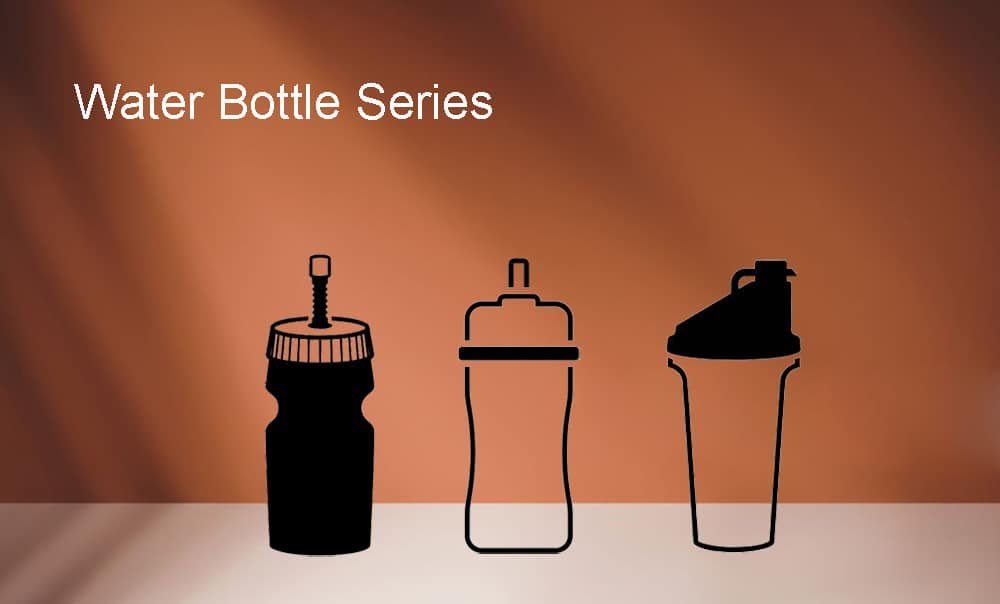
Biodegradable materials
- PLA (Polylactic Acid): Derived from cornstarch or sugarcane, PLA is commonly used in packaging, disposable cutlery, and food containers, breaking down in industrial composting facilities.
- Bamboo: Fast-growing and renewable, bamboo is used for a variety of products, including toothbrushes, utensils, and straws, which naturally decompose after use.
- Hemp: Hemp fibers can be used to create biodegradable paper, textiles, and packaging materials that break down more easily than traditional plastics.
- Mushroom Packaging: Made from mycelium, this innovative material serves as an eco-friendly alternative to Styrofoam for packaging and insulation, decomposing in a matter of weeks.
- Paper: Traditional paper products, including bags, plates, and napkins, are biodegradable and can break down naturally when disposed of properly.
- Coconut Coir: This natural fiber from coconut husks is used for biodegradable pots and garden supplies, providing an eco-friendly option for gardening.
- Seaweed-Based Materials: Seaweed can be transformed into biodegradable packaging films and straws, offering a sustainable alternative to single-use plastics.
- Biodegradable Plastics: Some plastics are specifically designed to break down more easily, such as PBAT (polybutylene adipate terephthalate), which is used in bags and food packaging.
- Compostable Biopolymers: Materials like PHA (polyhydroxyalkanoate) are produced by microorganisms and can be used for various applications, including bags and food containers that decompose in composting environments.
- Rice Hulls: This agricultural byproduct can be used to create biodegradable tableware and packaging materials, making use of waste while reducing plastic reliance.
These biodegradable materials not only reduce environmental impact but also offer innovative solutions for sustainable product design, making them increasingly popular across various industries.
B. Benefits of sustainability in branding
- Enhanced Brand Reputation: Adopting sustainable practices can significantly improve your brand’s image, fostering trust and loyalty among consumers who prioritize environmental responsibility.
- Increased Customer Loyalty: Brands that commit to sustainability often attract customers who align with those values, leading to stronger emotional connections and repeat business.
- Competitive Advantage: Sustainability can differentiate your brand in a crowded market, helping you stand out and attract eco-conscious consumers.
- Attracting New Audiences: Sustainable branding can open doors to new demographics, particularly younger consumers who prioritize ethical consumption.
- Positive Word of Mouth: Satisfied customers who appreciate your commitment to sustainability are more likely to share their experiences, boosting organic marketing through recommendations.
- Cost Savings: Implementing sustainable practices can lead to reduced waste and lower operational costs over time, ultimately benefiting your bottom line.
- Compliance and Risk Management: Embracing sustainability can help your brand stay ahead of regulations and reduce risks associated with environmental liabilities.
- Innovation and Creativity: Focusing on sustainability encourages brands to innovate, leading to new products and services that can attract attention and drive sales.
- Employee Engagement: Companies that prioritize sustainability often experience higher employee satisfaction and retention, as employees take pride in working for a responsible organization.
- Long-Term Viability: By integrating sustainability into your brand strategy, you contribute to a more sustainable future, ensuring your brand remains relevant and viable in an evolving market.
Incorporating sustainability into your branding not only enhances your reputation but also creates meaningful connections with consumers, paving the way for long-term success.
C. Examples of successful eco-friendly products
- Reusable Shopping Bags: Brands like Baggu and ChicoBag have popularized stylish and durable reusable bags that appeal to environmentally conscious consumers, reducing plastic waste.
- Bamboo Toothbrushes: Companies like Brush with Bamboo offer biodegradable toothbrushes made from bamboo, providing a sustainable alternative to plastic toothbrushes.
- Eco-Friendly Water Bottles: Brands like S’well and Hydro Flask produce insulated, reusable water bottles that help reduce single-use plastic while promoting hydration on the go.
- Compostable Phone Cases: Pela Case offers phone cases made from biodegradable materials, allowing consumers to protect their devices without contributing to plastic pollution.
- Plant-Based Cleaning Products: Brands like Seventh Generation and Method create eco-friendly cleaning supplies made from plant-based ingredients, promoting a healthier home environment.
- Organic Cotton Apparel: Companies like Patagonia and Eileen Fisher produce clothing made from organic cotton and recycled materials, appealing to consumers who prioritize sustainable fashion.
- Solar-Powered Gadgets: Products like solar chargers and outdoor lights, such as those from Goal Zero, provide renewable energy solutions that reduce reliance on conventional power sources.
- Reusable Straws: Brands like FinalStraw and Eco-Products offer stainless steel or silicone reusable straws, providing alternatives to single-use plastic straws.
- Biodegradable Pet Waste Bags: Companies like Pooch Paper produce pet waste bags that break down naturally, appealing to pet owners who want to reduce their environmental footprint.
- Upcycled Products: Brands like REI and TerraCycle create products from upcycled materials, transforming waste into new, usable items while promoting circular economy principles.
These successful eco-friendly products demonstrate how brands can effectively combine sustainability with consumer appeal, leading to positive environmental impact and increased customer loyalty.
III. Technology-Driven Promotional Items
- Innovation and Relevance: As technology continues to evolve rapidly, consumers are increasingly drawn to innovative gadgets. Promotional products that incorporate the latest tech trends resonate with audiences, showcasing brands as modern and forward-thinking.
- Practicality and Utility: Tech gadgets offer practical benefits that consumers find valuable. Items like wireless chargers, Bluetooth speakers, and smart devices serve everyday needs, making them more likely to be used and appreciated.
- Enhancing Brand Engagement: Tech gadgets encourage interaction and engagement. When recipients use these products, they create positive experiences associated with the brand, leading to higher brand recall and loyalty.
- Appealing to Younger Audiences: Younger consumers, particularly Millennials and Gen Z, are tech-savvy and expect brands to provide modern solutions. Promotional tech products cater to their preferences and lifestyle, helping brands connect with this demographic.
- Social Media Sharing: Unique tech gadgets often prompt social sharing. When consumers showcase these items on social media, it amplifies brand visibility and creates organic word-of-mouth marketing.
- Customizability: Many tech gadgets can be easily customized with branding, colors, and designs, allowing businesses to create memorable and personalized promotional items that stand out.
- Sustainability and Innovation: As consumers become more environmentally conscious, brands that offer sustainable tech products—like solar-powered chargers or eco-friendly accessories—can meet this demand while reinforcing their commitment to sustainability.
- Versatility: Tech gadgets can cater to various industries and audiences, making them versatile promotional products. From office accessories for corporate clients to fitness trackers for health brands, the options are endless.
- Data and Analytics Integration: Brands can leverage data analytics from tech gadgets to understand consumer behavior better. This insight can inform future marketing strategies and product offerings.
In summary, the growing demand for tech gadgets in promotional products reflects a shift toward practicality, innovation, and consumer engagement. Brands that embrace this trend can enhance their marketing efforts and foster deeper connections with their audience.
A. Growing demand for tech gadgets
Wireless chargers
- High Demand and Utility: With the increasing prevalence of smartphones and other wireless charging-compatible devices, wireless chargers have become a highly sought-after promotional item. They offer practicality and convenience, making them valuable to recipients.
- Brand Visibility: Wireless chargers provide ample space for branding. Companies can customize these gadgets with logos and colors, ensuring that their brand remains visible every time the product is used.
- Modern Appeal: As technology evolves, consumers gravitate toward modern solutions. Offering wireless chargers positions a brand as innovative and aligned with current trends, appealing particularly to tech-savvy audiences.
- Enhanced User Experience: Wireless chargers simplify the charging process, eliminating the hassle of tangled cords. This ease of use enhances the overall experience, fostering positive associations with the brand that provides them.
- Versatility: Wireless chargers come in various designs and styles, from compact models for travel to multi-device chargers for home or office use. This versatility allows brands to choose items that best fit their target audience.
- Gift-ability: As a premium promotional item, wireless chargers make excellent gifts for clients, employees, and event attendees. Their perceived value can help strengthen business relationships and encourage loyalty.
- Eco-Friendly Options: Brands can choose to offer eco-friendly wireless chargers made from sustainable materials. This not only appeals to environmentally conscious consumers but also aligns with the growing trend of sustainability in marketing.
- Long-Lasting Impact: Unlike traditional promotional items that may be discarded, wireless chargers are likely to be kept and used over time. This longevity ensures ongoing brand exposure and reinforces brand recall.
- Integration with Marketing Campaigns: Wireless chargers can be integrated into broader marketing campaigns, such as giveaways at tech conferences or bundled with other tech-related products. This enhances their visibility and impact.
In conclusion, wireless chargers are a highly effective promotional product that combines practicality, modern appeal, and lasting brand visibility. By incorporating them into marketing strategies, businesses can engage their audience and strengthen brand loyalty.
Smart speakers
- Growing Popularity: Smart speakers have become increasingly popular as consumers embrace smart home technology. Offering these gadgets as promotional items positions your brand at the forefront of this trend.
- Innovative Engagement: Smart speakers facilitate interactive experiences, allowing users to engage with your brand through voice commands, apps, or integrated skills. This can create a memorable connection and enhance brand loyalty.
- Customizable Features: Many smart speakers allow for customization through branding, such as logos and color schemes. This personalization not only promotes brand visibility but also aligns the product with the user’s lifestyle.
- Practical Use: Smart speakers serve multiple purposes, from playing music and controlling smart home devices to providing weather updates and answering queries. Their versatility makes them valuable items that recipients are likely to use regularly.
- Long-Term Exposure: Unlike disposable promotional products, smart speakers have a longer lifespan. As users integrate them into their daily routines, your brand will benefit from continuous exposure and engagement.
- Tech-Savvy Appeal: These gadgets cater to tech-savvy consumers who are always looking for the latest innovations. Offering smart speakers can attract a younger demographic that values cutting-edge technology.
- Enhanced Customer Interaction: Brands can create custom voice commands or skills for their smart speakers, allowing users to interact with their brand in unique ways. This can lead to increased brand loyalty and a more engaged audience.
- Social Sharing Potential: Unique and functional smart speakers can encourage users to share their experiences on social media, further amplifying brand visibility and fostering organic word-of-mouth marketing.
- Sustainability Options: Some manufacturers offer eco-friendly smart speakers made from sustainable materials. This aligns with consumer demand for environmentally responsible products and enhances your brand’s image.
- Bundled Marketing Campaigns: Smart speakers can be incorporated into larger marketing campaigns, such as giveaways at tech events or bundled with other smart home devices, increasing their appeal and effectiveness.
In summary, smart speakers are a powerful promotional product that combines practicality, innovation, and long-term brand exposure. By incorporating them into your marketing strategy, you can create meaningful connections with your audience and enhance brand loyalty.
B. How tech products enhance brand engagement
- Interactive Experiences: Tech products, such as augmented reality apps or smart devices, create engaging and immersive experiences that captivate consumers, encouraging deeper interaction with the brand.
- Personalization: Tech-enabled products can offer tailored experiences based on user preferences, fostering a sense of connection and making consumers feel valued.
- Convenience and Accessibility: Smart gadgets and apps streamline processes for consumers, enhancing their overall experience with the brand and encouraging repeat interactions.
- Data-Driven Insights: Tech products can collect user data, allowing brands to understand customer behavior better and refine their marketing strategies based on real-time feedback.
- Social Sharing: Innovative tech products often encourage users to share their experiences on social media, amplifying brand visibility and creating a sense of community around the brand.
- Gamification: Incorporating game-like elements into tech products can boost user engagement, making interactions with the brand more enjoyable and rewarding.
- Enhanced Communication: Tech products facilitate better communication between brands and consumers through apps, chatbots, and other digital channels, improving customer service and support.
- Increased Brand Loyalty: When consumers have positive experiences with tech products, they are more likely to develop loyalty to the brand, leading to repeat purchases and long-term relationships.
- Content Sharing: Tech products can help brands create and share valuable content, such as tutorials or user-generated content, that engages audiences and builds brand authority.
- Innovation Perception: Offering cutting-edge tech products positions a brand as innovative and forward-thinking, attracting tech-savvy consumers and enhancing overall brand perception.
By integrating tech products into their marketing strategies, brands can create meaningful interactions that drive engagement, foster loyalty, and enhance the overall customer experience.
C. Case studies of brands using tech items effectively
- Nike – Nike+: Nike integrated technology with its products through the Nike+ app, which tracks users’ fitness activities and provides personalized coaching. This engagement not only motivates users but also fosters a community of fitness enthusiasts who share their achievements, enhancing brand loyalty.
- Coca-Cola – Coca-Cola Freestyle: The Coca-Cola Freestyle machine allows customers to customize their drinks using touchscreen technology. This interactive experience not only increases engagement but also collects valuable data on consumer preferences, enabling Coca-Cola to refine its marketing strategies.
- Starbucks – Mobile App: Starbucks’ app offers mobile ordering and payment options, loyalty rewards, and personalized promotions. By enhancing convenience and providing tailored offers, the app drives customer engagement and repeat visits.
- IKEA – IKEA Place: IKEA developed an augmented reality app that allows customers to visualize how furniture would look in their homes before purchase. This tech innovation improves the shopping experience, reducing uncertainty and increasing conversion rates.
- Sephora – Virtual Artist: Sephora’s Virtual Artist app uses augmented reality to let customers try on makeup virtually. This interactive experience enhances engagement, encourages purchases, and reduces return rates by helping customers make informed choices.
- Amazon – Alexa: Amazon’s Alexa has become an integral part of many households. By incorporating voice technology, Amazon has enhanced customer engagement through voice shopping and personalized recommendations, making it easier for consumers to interact with the brand.
- Adidas – miCoach: Adidas launched the miCoach platform, which includes smart shoes and fitness apps that track performance. This tech-driven approach creates a personalized fitness experience, strengthening the bond between the brand and its customers.
- L’Oreal – AR Makeup App: L’Oreal’s app allows users to virtually try on various makeup products using augmented reality. This innovative approach boosts customer engagement and helps consumers make confident purchasing decisions.
- BMW – ConnectedDrive: BMW’s ConnectedDrive technology enhances driver experience by offering features like real-time traffic updates, remote vehicle access, and integration with smart devices. This tech integration not only improves customer satisfaction but also positions BMW as a leader in automotive innovation.
- Nestlé – Smart Coffee Machines: Nestlé introduced connected coffee machines that allow users to brew coffee via an app. This integration of technology enhances user engagement by providing a convenient and personalized coffee-making experience.
These case studies demonstrate how brands effectively leverage technology to enhance engagement, personalize experiences, and build stronger connections with consumers.
IV. Personalized Promotional Products
A. The impact of customization on consumer engagement
Personalization options (e.g., names, messages)
- Names: Customizing products with individual names creates a personal touch, making recipients feel valued and appreciated. This fosters a stronger emotional connection to the brand.
- Messages: Including personalized messages, such as motivational quotes or brand slogans, can enhance the meaning behind the promotional item. Tailored messages resonate more deeply with recipients, reinforcing brand loyalty.
- Color and Design Choices: Allowing customers to select colors or design elements gives them a sense of ownership. This can be particularly effective for products like bags, apparel, or tech accessories.
- Monograms: Offering monogramming options for items like tote bags or notebooks adds a sophisticated touch and makes the product feel exclusive.
- Custom Packaging: Personalizing the packaging can enhance the overall experience. Unique, branded packaging that reflects the recipient’s personality can make a significant impact.
- Event-Specific Personalization: Tailoring products for specific events—like trade shows or conferences—can make them more relevant. For example, including the event name or date on the item can serve as a memorable keepsake.
- Interactive Personalization: Some brands offer interactive options, such as creating a custom design through an online tool. This engages customers in the process and results in a unique product.
- Functional Personalization: Adding features that cater to individual needs, like customizable tech gadgets that sync with personal devices, can enhance usability and appeal.
- Storytelling Elements: Incorporating personal stories or experiences into the product design can create a unique narrative that resonates with the audience.
- Social Media Integration: Encouraging recipients to share their personalized products on social media can amplify brand visibility. Hashtags or social media handles can be included on the items to facilitate this sharing.
By offering these personalization options, brands can create promotional products that not only stand out but also forge deeper connections with their audience, ultimately leading to increased engagement and loyalty.
Unique designs tailored to specific audiences
- Understanding the Target Audience: Tailoring designs begins with in-depth research on the target audience’s preferences, interests, and lifestyles. This ensures that promotional products resonate and meet their specific needs.
- Industry-Specific Themes: Create designs that reflect the industry of your audience. For example, tech-themed gadgets for IT professionals or eco-friendly items for sustainability-focused groups can enhance relevance.
- Cultural Relevance: Incorporate cultural elements or themes that resonate with specific demographic groups. This could include colors, symbols, or motifs that hold significance within particular communities.
- Age and Lifestyle Considerations: Design promotional products that appeal to different age groups and lifestyles. For instance, trendy items for younger audiences and classic, elegant designs for older demographics.
- Seasonal and Event-Based Designs: Customize products for specific seasons, holidays, or events (e.g., summer-themed items or products for local festivals). This relevance can increase engagement and desirability.
- Functionality and Practicality: Tailor designs to meet the practical needs of the audience. For example, gym enthusiasts may prefer workout gear, while office workers might appreciate stylish stationery.
- Collaboration with Influencers: Partnering with influencers to create co-branded designs can appeal to their followers. This collaboration can result in unique, trendy products that capture audience interest.
- Interactive and Engaging Elements: Incorporate interactive features into designs that encourage user engagement, such as customizable colors or functions that adapt to user preferences.
- Feedback-Driven Design: Solicit feedback from the audience during the design process to ensure that the final product aligns with their tastes and expectations. This can enhance satisfaction and loyalty.
- Storytelling Through Design: Use design elements to tell a story that resonates with the audience. This could include themes of empowerment, adventure, or community, making the product more relatable and impactful.
By creating unique designs tailored to specific audiences, brands can enhance the appeal of their promotional products, resulting in stronger connections and increased effectiveness in their marketing efforts.
B. Examples of successful personalized campaigns
- Coca-Cola’s “Share a Coke” Campaign: Coca-Cola replaced its iconic logo with popular names on bottles and cans, encouraging customers to find and share drinks with their friends and family. This personalized approach boosted sales and created significant social media buzz.
- Nike’s NIKEiD: Nike allows customers to design their own shoes by selecting colors, materials, and personalizing with names or numbers. This customization enhances customer engagement and brand loyalty, making each pair unique to the individual.
- M&M’s Custom Chocolate Campaign: M&M’s offers a service where customers can personalize the color and message on their candies. This campaign effectively targets events like weddings and corporate gatherings, driving engagement and sales.
- Starbucks’ Mobile App: Starbucks’ app allows customers to customize their drink orders and earn rewards. This personalized experience enhances customer satisfaction and encourages repeat visits, reinforcing brand loyalty.
- Spotify Wrapped: Spotify provides users with a personalized year-in-review summary that highlights their most listened-to songs and artists. This campaign generates significant social sharing and engagement, creating a sense of community among users.
- Lego’s Build Your Own Sets: Lego allows customers to create personalized sets tailored to individual preferences, including custom minifigures. This approach appeals to both children and adult fans, enhancing brand loyalty.
- Pandora Jewelry’s Engraving Service: Pandora offers personalization options for their jewelry, allowing customers to engrave names or special dates. This added personal touch boosts emotional connections and drives sales.
- Harley-Davidson’s Custom Motorcycles: Harley-Davidson allows customers to personalize their motorcycles with various accessories and customizations, fostering a sense of ownership and deepening brand loyalty.
- Vistaprint’s Custom Marketing Materials: Vistaprint enables businesses to design personalized marketing materials, such as business cards and brochures. This service helps small businesses create unique branding, enhancing their market presence.
- Pepsi’s “Pepsi Generations” Campaign: Pepsi launched a campaign allowing customers to share their own stories and memories associated with the brand. By inviting personalized storytelling, Pepsi fostered a deeper connection with its audience.
These successful personalized campaigns demonstrate the power of customization in enhancing customer engagement, driving brand loyalty, and creating memorable experiences that resonate with consumers.
C. Tools and platforms for creating personalized products
- Zazzle: A marketplace that allows users to create and customize a wide range of products, from apparel to home decor. It offers easy-to-use design tools for adding personal touches.
- Vistaprint: Specializes in custom printing solutions for business cards, marketing materials, and promotional products. Their user-friendly platform makes personalization simple and efficient.
- Custom Ink: Focuses on custom apparel and accessories. Users can design T-shirts, hoodies, and more with personalized graphics, text, and colors, making it perfect for events and team building.
- Printful: An on-demand printing and fulfillment service that integrates with e-commerce platforms. It allows businesses to create and sell personalized products without holding inventory.
- TeeSpring (now Spring): A platform for creating custom merchandise, particularly apparel. Users can design items and sell them through their own storefronts, with options for personalization.
- Café Press: Offers a wide variety of customizable products, including gifts, home decor, and clothing. Users can create personalized items using their own designs or select from existing templates.
- Sticker Mule: Primarily focused on custom stickers, labels, and packaging, this platform allows users to create personalized designs for promotional items and marketing materials.
- Designhill: A graphic design platform that enables users to create personalized logos, business cards, and other branding materials. It also offers a marketplace for finding designers.
- Shopify: With various apps and integrations, Shopify allows businesses to create personalized products and sell them online. Customization options can be added to product pages to enhance customer engagement.
- Trophy Smack: A platform specializing in customizable trophies and awards for sports and events. Users can personalize awards with names, logos, and specific achievements.
- Canva: While primarily a design tool, Canva offers features for creating personalized marketing materials, social media graphics, and other promotional products that can be printed or shared digitally.
- Mixbook: Focuses on personalized photo products, such as photo books, calendars, and cards. Users can create customized designs to commemorate special events.
These tools and platforms provide a range of options for businesses and individuals looking to create personalized products, enhancing customer engagement and satisfaction through unique and tailored offerings.
V. Health and Wellness Focus
A. The importance of wellness in consumer choices
- Growing Health Consciousness: As consumers become more aware of the impact of lifestyle choices on their health, wellness has become a significant factor in purchasing decisions. Products that promote physical, mental, and emotional well-being are increasingly favored.
- Influence of Social Media: The rise of wellness influencers and health-focused content on social media platforms has heightened consumer interest in wellness. This exposure encourages individuals to seek products that align with a healthier lifestyle.
- Preference for Natural Ingredients: Consumers are gravitating towards products with natural, organic, and non-toxic ingredients. This trend is particularly evident in categories like food, beauty, and personal care, where transparency and ingredient sourcing matter.
- Holistic Wellness Approaches: Many consumers are adopting holistic approaches to wellness, considering not only physical health but also mental and emotional well-being. Brands that address this comprehensive view of wellness can build stronger connections with their audience.
- Mental Health Awareness: Increased awareness of mental health issues has led consumers to seek products that support emotional well-being, such as stress-relief items, meditation apps, and self-care products.
- Fitness and Active Lifestyles: The demand for fitness-related products, such as workout gear, health supplements, and fitness tech, reflects a growing commitment to maintaining an active lifestyle. Consumers are more likely to choose brands that support their fitness goals.
- Sustainability and Ethical Practices: Wellness-oriented consumers often prioritize brands that demonstrate social responsibility and sustainability. This includes ethical sourcing, environmentally friendly practices, and fair labor policies, influencing their purchasing choices.
- Personalization and Customization: Consumers are increasingly seeking personalized wellness solutions tailored to their specific needs and preferences. Brands that offer customizable products or services can better meet these demands.
- Community and Support: The desire for community and support in wellness journeys influences consumer choices. Brands that foster community engagement and provide resources for customers to connect are more likely to build loyalty.
- Long-Term Investment: Many consumers view wellness products as investments in their long-term health. This mindset encourages spending on high-quality, effective products that promote well-being, even at higher price points.
In summary, wellness plays a crucial role in consumer choices today. Brands that prioritize health, sustainability, and community engagement can better connect with consumers and drive loyalty in a market increasingly focused on well-being.
B. Top health-related promotional items
Fitness trackers
- Smart Fitness Bands: Wearable bands that track steps, heart rate, and sleep patterns. Customizable with branding for high visibility.
- Wireless Earbuds: Ideal for workouts, these can be branded and bundled with fitness trackers to enhance the exercise experience.
- Water Bottles with Time Markers: Encourages hydration during workouts. Can be personalized with logos and motivational quotes.
- Fitness Journals: Customized journals for tracking workouts, nutrition, and wellness goals, paired with fitness trackers for a holistic approach.
- Yoga Mats: Branded mats provide a perfect promotional item for fitness trackers, appealing to yoga enthusiasts and promoting active lifestyles.
- Resistance Bands: Compact and versatile for workouts, these can be branded and serve as an excellent complement to fitness trackers.
- Gym Towels: Customizable towels that can be used during workouts. Useful for users of fitness trackers who are focused on their exercise routines.
- Bluetooth Speakers: Portable speakers for music during workouts can enhance the fitness experience when paired with fitness trackers.
- Sports Armbands: Designed to hold smartphones securely during exercise, these can be branded and used with fitness trackers for easy access.
- Activity/Goal Stickers: Fun, customizable stickers to track daily goals and milestones, providing an engaging way to motivate users alongside fitness trackers.
These health-related promotional items not only enhance the user experience of fitness trackers but also promote brand visibility and encourage a healthy lifestyle among recipients.
Wellness kits
- Reusable Water Bottles: Encourages hydration and can be branded with company logos or wellness messages.
- Essential Oil Roll-Ons: Portable and soothing, these can be customized for stress relief or relaxation, making them a perfect addition to wellness kits.
- Vitamins and Supplements: Sample packs or branded containers of popular vitamins can promote health and wellness.
- Yoga or Meditation Guides: Informative booklets or cards that offer yoga poses or meditation techniques, supporting mental well-being.
- Stress Balls: Branded stress-relief balls are great for promoting relaxation and can be customized with logos.
- Herbal Tea Packs: Offering calming or energizing tea blends can enhance the wellness experience and promote relaxation.
- First Aid Kits: Compact kits for minor injuries, branded for safety and preparedness, and a thoughtful addition to wellness kits.
- Fitness Resistance Bands: Compact and versatile for home workouts, these can encourage physical activity and health.
- Sleep Masks: Branded sleep masks promote better sleep hygiene, adding value to wellness kits.
- Healthy Snack Packs: Nutritious snacks, such as nuts or protein bars, can be included to encourage healthy eating habits.
These items collectively support physical and mental well-being, making wellness kits valuable and appreciated by recipients.
C. How these products can enhance brand reputation
- Commitment to Health and Well-Being: Offering wellness products demonstrates a brand’s dedication to promoting health and well-being. This commitment can resonate with consumers, enhancing brand loyalty and trust.
- Positive Associations: Providing products that contribute to physical and mental health can create positive associations between the brand and wellness. Consumers are likely to view the brand as caring and responsible.
- Increased Customer Engagement: Wellness products encourage interaction and engagement with customers. Brands that actively promote health initiatives can foster a sense of community and connection with their audience.
- Alignment with Consumer Values: As consumers increasingly prioritize wellness, brands that offer health-related products align themselves with these values. This alignment can enhance brand perception and attract health-conscious consumers.
- Social Responsibility: Promoting wellness can position a brand as socially responsible, particularly if products are sourced sustainably or support ethical practices. This reputation can appeal to a broader audience.
- Customer Education: Providing educational materials along with wellness products helps consumers understand their benefits. This knowledge can foster brand authority and trust in the industry.
- Positive Word of Mouth: Satisfied customers are likely to share their experiences with wellness products, leading to organic word-of-mouth marketing. Positive reviews can significantly enhance brand reputation.
- Differentiation from Competitors: Offering unique and thoughtful wellness products can set a brand apart from competitors. This differentiation can enhance brand recognition and preference in a crowded market.
- Encouraging a Healthy Lifestyle: Brands that promote a healthy lifestyle through their products can be viewed as leaders in health and wellness. This positioning can attract like-minded consumers and reinforce brand values.
- Long-Term Relationships: By investing in customers’ well-being, brands can cultivate long-term relationships, resulting in increased loyalty and repeat business. Customers are more likely to return to brands that prioritize their health.
In summary, offering wellness products can significantly enhance a brand’s reputation by aligning with consumer values, fostering engagement, and promoting a positive image in the marketplace.
VI. Innovative and Unique Promotional Products
A. The role of creativity in standing out
- Unique Branding: Creative branding strategies—such as distinctive logos, packaging, and messaging—help a brand carve out a unique identity, making it easily recognizable and memorable.
- Innovative Product Design: Creative product designs can differentiate offerings in a crowded market. Unique features or aesthetics can attract attention and set products apart from competitors.
- Engaging Marketing Campaigns: Creative advertising and promotional campaigns can capture consumer interest and evoke emotions, leading to higher engagement and conversion rates.
- Storytelling: Using creativity to tell compelling brand stories can forge deeper connections with consumers. Engaging narratives resonate with audiences and enhance brand loyalty.
- Memorable Experiences: Creative approaches to customer experiences—such as interactive events, pop-up shops, or immersive online experiences—can leave lasting impressions and encourage repeat business.
- Problem Solving: Creativity is essential for innovation and problem-solving. Brands that think outside the box can address consumer needs in novel ways, enhancing their appeal.
- Social Media Appeal: Creative content is more likely to be shared on social media, increasing brand visibility. Unique visuals, humor, and relatable messaging can go viral, reaching wider audiences.
- Personalization: Incorporating creativity into personalized products or services makes them more appealing. Tailored experiences resonate with consumers and enhance brand affinity.
- Adaptability: Creative brands are often more adaptable to changing market trends and consumer preferences. This agility allows them to stay relevant and maintain a competitive edge.
- Cultural Relevance: Creative brands that tap into current cultural trends or societal issues can resonate more deeply with their audiences, fostering a sense of connection and loyalty.
In summary, creativity plays a vital role in helping brands stand out in a competitive landscape. By leveraging innovative ideas and unique approaches, brands can capture consumer attention, enhance engagement, and build lasting relationships.
B. Examples of unique promotional products to watch
Multi-functional items (e.g., portable tools)
- Multi-Tool Keychains: Compact keychains featuring various tools like screwdrivers, bottle openers, and mini knives, making them practical and convenient for everyday use.
- Portable Phone Stand and Charger: A sleek device that functions as both a phone stand and a portable charger, perfect for tech-savvy consumers on the go.
- Water Bottle with Built-In Bluetooth Speaker: A stylish water bottle that doubles as a Bluetooth speaker, appealing to fitness enthusiasts who enjoy music while exercising.
- Stylus Pen with Touchscreen Cleaner: A multifunctional pen that writes, works as a stylus for touchscreens, and includes a cleaning cloth for devices, combining practicality with tech utility.
- Collapsible Shopping Bags: Eco-friendly bags that fold into a small pouch for easy carrying but expand to hold groceries or other items, promoting sustainability.
- Travel Mugs with Infuser: Mugs that can brew tea or infuse water with fruits while keeping beverages hot, perfect for health-conscious consumers.
- Portable Phone Sanitizer: A compact device that uses UV light to sanitize phones and small items, catering to hygiene-conscious customers.
- Emergency Survival Kits: Kits that include items like a flashlight, whistle, and multi-tool, promoting safety and preparedness in a compact package.
- Wireless Charging Pad with Organizer: A charging pad that also has compartments for holding small items like keys and cards, ideal for decluttering desks.
- LED Flashlight with Power Bank: A flashlight that doubles as a power bank for charging devices, making it an essential tool for outdoor enthusiasts.
These unique multi-functional promotional products not only enhance usability but also provide practical value to consumers, making them effective marketing tools.
Interactive products (e.g., augmented reality experiences)
- Augmented Reality Business Cards: Business cards that incorporate AR technology, allowing users to scan the card with their smartphones to access interactive content, videos, or 3D models.
- QR Code-Enabled Stickers: Stickers that link to engaging content, such as games or exclusive offers, when scanned, providing an interactive experience for users.
- Virtual Reality Headsets: Branded VR headsets that offer immersive experiences related to a brand or product, allowing consumers to engage with the brand in a novel way.
- Interactive Product Packaging: Packaging that includes QR codes or AR elements, enabling consumers to scan and receive additional information, videos, or tutorials about the product.
- Gamified Loyalty Programs: Loyalty cards or apps that incorporate game-like elements, such as challenges or rewards, encouraging user interaction and repeat engagement with the brand.
- Smartphone-Compatible Mini Drones: Promotional mini drones that can be controlled via smartphone apps, providing a fun and interactive way for users to engage with a brand.
- Interactive Touchscreen Kiosks: Branded kiosks in retail environments that allow customers to interact with products, access information, or participate in games and surveys.
- Social Media Filters: Custom AR filters for platforms like Instagram or Snapchat that promote a brand, encouraging users to share their experiences online.
- Interactive Coasters: Coasters with embedded technology that interact with smartphones to provide games, discounts, or brand stories when scanned.
- Wearable Tech with Interactive Features: Branded smartwatches or fitness bands that not only track activity but also offer interactive challenges or social sharing capabilities.
These interactive promotional products leverage technology to create engaging experiences that can enhance brand awareness and customer connection.
C. Success stories of brands using innovative products
- Coca-Cola’s AR Experience: Coca-Cola launched a campaign where customers could scan their cans with a smartphone app to unlock augmented reality experiences, including games and music. This innovative approach significantly increased engagement and brand loyalty.
- IKEA’s Place App: IKEA introduced an AR app that allows customers to visualize furniture in their own homes before purchasing. This innovation improved the shopping experience and led to higher conversion rates.
- Nike’s NIKEiD: Nike allowed customers to personalize their shoes with colors, materials, and designs through the NIKEiD platform. This customization drove sales and created a strong emotional connection with the brand.
- Starbucks’ Mobile Ordering: Starbucks implemented a mobile ordering system through its app, allowing customers to customize and order drinks in advance. This convenience improved customer satisfaction and increased sales.
- Unilever’s Lifebuoy Handwashing Campaign: Unilever used interactive educational campaigns that included a mobile app teaching proper handwashing techniques. This initiative not only promoted health but also enhanced the brand’s reputation.
- Amazon’s Dash Button: Amazon introduced physical buttons that allowed customers to reorder household products with a single press. This convenience led to increased product sales and customer loyalty.
- Lego’s LEGO Ideas: Lego created a platform where fans could submit their own designs for new sets. The community-driven approach fostered engagement and resulted in successful new product launches.
- GoPro’s User-Generated Content: GoPro encouraged users to share their videos and photos taken with their cameras. This innovative marketing strategy showcased the product’s capabilities and built a passionate community around the brand.
- Pepsi’s “Pepsi Perfect” Promotion: As part of a promotion for “Back to the Future,” Pepsi released a limited edition drink in a futuristic bottle, creating buzz and driving sales through nostalgia and exclusivity.
- Red Bull’s Stratos Jump: Red Bull sponsored Felix Baumgartner’s space jump, which was streamed live. This bold marketing stunt reinforced the brand’s adventurous image and significantly boosted brand awareness globally.
These success stories illustrate how innovative products and strategies can create memorable experiences, enhance customer engagement, and ultimately drive brand growth.
VII. Conclusion
A. Recap of the importance of choosing the right promotional products
- Brand Alignment: Selecting promotional products that align with your brand values and messaging reinforces your identity and strengthens customer recognition.
- Target Audience Appeal: Understanding your audience’s preferences ensures that the products resonate with them, increasing the likelihood of engagement and positive reception.
- Practicality and Usefulness: Choosing useful products enhances the chances of them being kept and used regularly, which keeps your brand top of mind and fosters loyalty.
- Emotional Connection: The right promotional items can create emotional ties with consumers, encouraging them to feel more connected to your brand.
- Differentiation: Innovative and unique products can set your brand apart from competitors, making it more memorable in a crowded market.
- Cost-Effectiveness: Well-chosen promotional products can provide a high return on investment by increasing brand visibility and driving customer engagement without significant costs.
- Long-Term Impact: Quality products that are kept and used over time can create lasting impressions, leading to sustained brand awareness and loyalty.
- Sustainability Considerations: Opting for eco-friendly products can resonate with environmentally conscious consumers, enhancing your brand’s reputation and appeal.
- Versatility: Selecting versatile products allows for broader applications, making them suitable for various marketing campaigns and events.
- Feedback and Insights: The right promotional items can facilitate customer feedback and insights, helping brands refine their offerings and improve customer satisfaction.
In summary, choosing the right promotional products is crucial for effectively conveying your brand message, engaging your target audience, and maximizing the impact of your marketing efforts.
B. Encouragement to embrace trends and be proactive in planning for 2025
As we look ahead to 2025, it’s essential to embrace emerging trends in promotional products and marketing strategies. Staying ahead of the curve will not only keep your brand relevant but also create unique opportunities for engagement and connection with your audience. By proactively planning and incorporating innovative ideas, such as multi-functional items and interactive experiences, you can set your brand apart in a competitive landscape.
Adapting to consumer preferences—whether through sustainability, personalization, or technology—will resonate with your target audience and enhance brand loyalty. Don’t hesitate to experiment and explore new avenues; the brands that thrive are those that anticipate change and adapt swiftly.
Investing time in strategic planning today will pay off tomorrow, so take the initiative to research, brainstorm, and innovate. Your proactive approach will ensure that you’re not just reacting to trends but leading the way into a successful 2025!
C. Call to action: Explore offerings and consider incorporating these top products into your marketing strategy
As you plan your marketing strategy for the coming year, consider incorporating the following top promotional products to enhance engagement and brand visibility:
- Multi-Functional Items: Products like portable tools or fitness trackers not only provide practical value but also demonstrate your brand’s commitment to innovation and utility.
- Interactive Experiences: Embrace augmented reality and gamified elements to create engaging experiences that capture attention and encourage customer interaction.
- Eco-Friendly Products: Sustainable options, such as reusable bags or biodegradable items, resonate with environmentally conscious consumers and enhance your brand’s reputation.
- Personalized Products: Customizable items allow consumers to feel a personal connection to your brand, fostering loyalty and repeat business.
- Health and Wellness Kits: In today’s health-conscious market, offering wellness kits with practical items can position your brand as caring and relevant.
- Tech Gadgets: Integrating popular tech items like wireless chargers or smart speakers can appeal to tech-savvy consumers and enhance your brand’s modern image.
- Educational Content: Pair promotional products with informative guides or resources that provide added value and position your brand as an industry expert.
- Experiential Promotions: Consider hosting events or workshops that showcase your products in action, creating memorable experiences that deepen customer connections.
By exploring these offerings and thoughtfully incorporating them into your marketing strategy, you can create impactful campaigns that resonate with your audience, drive engagement, and ultimately boost brand loyalty. Stay proactive and innovative, and watch your brand thrive!
VIII. Get A Quote From Ideal Promotional
- Uncategorized
21313
- Retail Bags
Branded Retail Bags
- Custom Banner
Pop Up Display Replacement Parts
- Custom Highlighter Pens
Custom Highlighters
- Custom Highlighter Pens
Branded Highlighters
- Custom Highlighter Pens
White Highlighter Pen
- Custom Highlighter Pens
Highlighter Pencil
- Retail Bags
Custom Retail Shopping Bags
- Retail Bags
Custom Retail Paper Bags
- Retail Bags
Custom Retail Bags with Logo
- Retail Bags
Custom Retail Bags
- Retail Bags
Custom Plastic Retail Bags
- Retail Bags
Custom Plastic Retail Bags
- Retail Bags
Cheap Retail Paper Bags
- Custom Lanyards
Heavy Duty Retractable Lanyard
- Custom Banner
Roller Banner Replacement Pole

